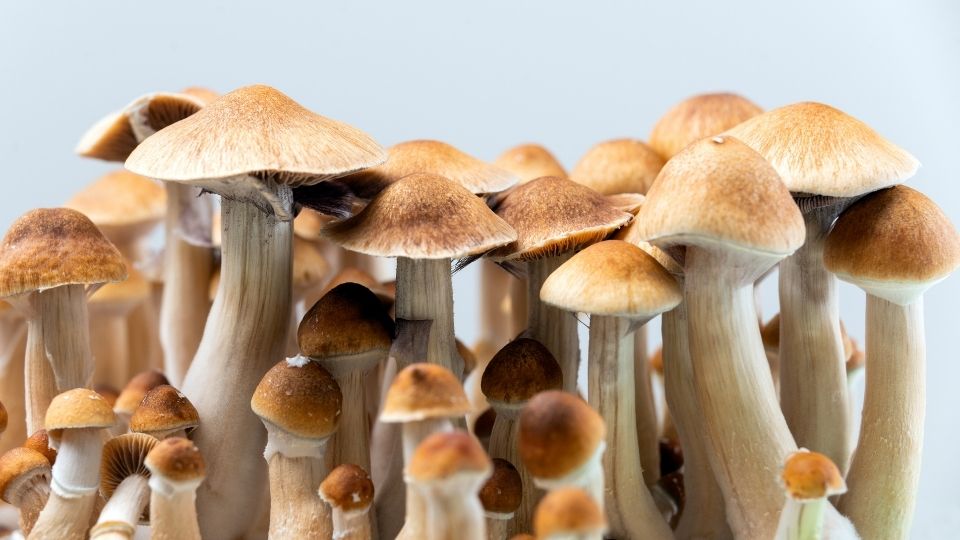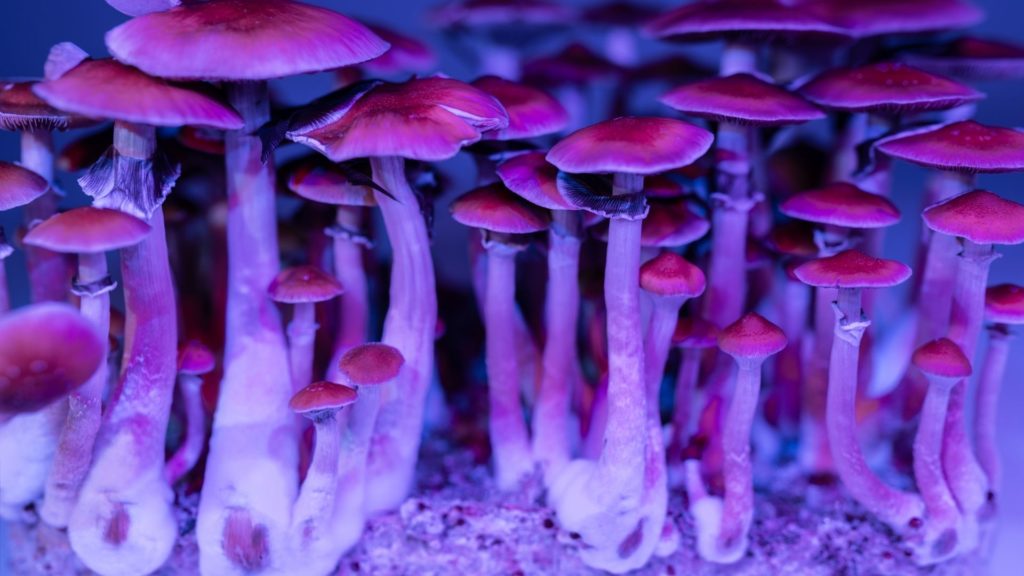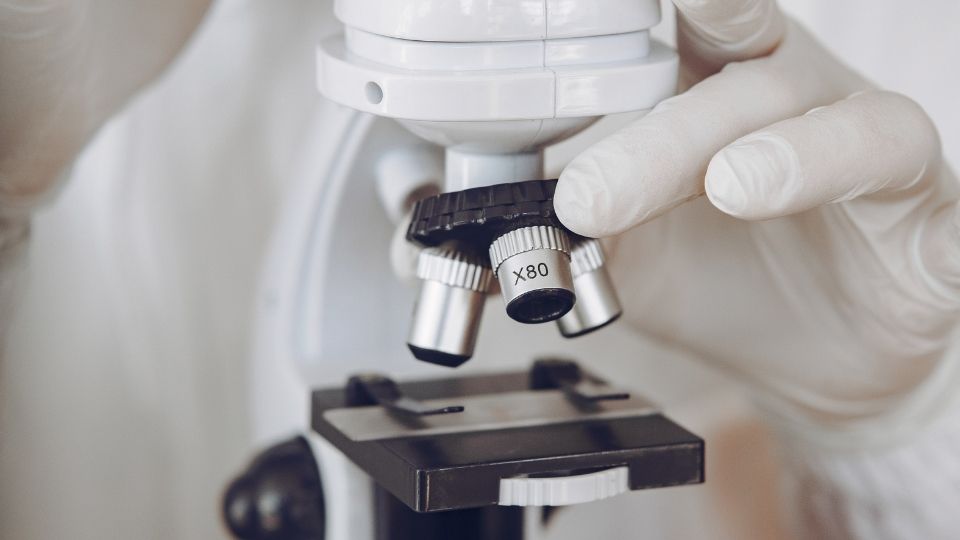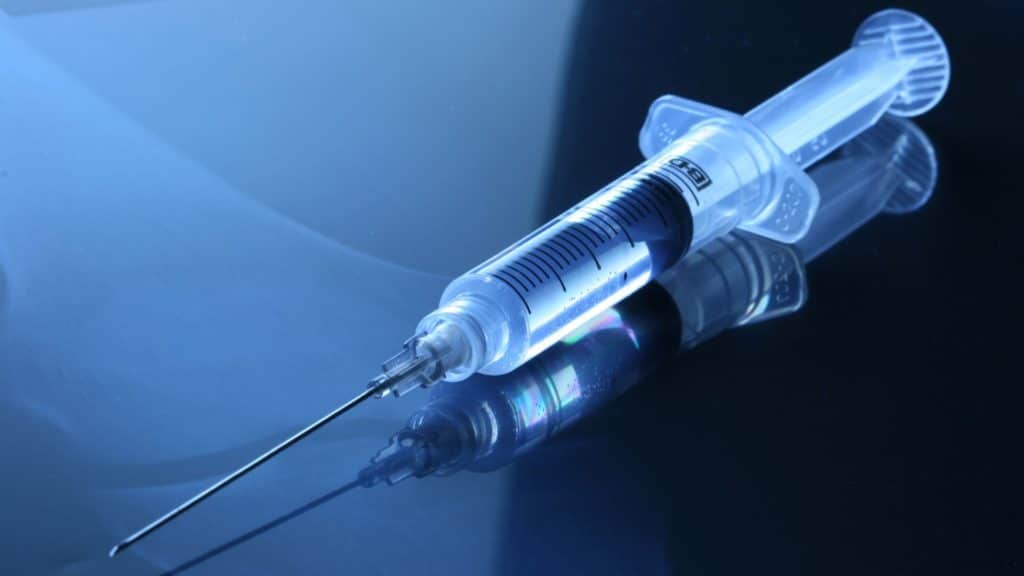Golden Teacher Mushrooms Spores
Golden Teacher is perhaps the most famous and popular of all the mushroom strains derived from a genetic lineage – but why are Golden Teacher Mushrooms relevant to be considered for your mushroom spore journey and research?
➢ Golden Teacher Spores For Sale
Mushroom Strains Popularity
Why is this is one of the particular mushroom strains that’s so beloved by researchers, mycologists, microscopists, mushroom advocates?
Just why is Golden Teacher so special, even now, decades after rising to popularity in the 1980s?
In this post on the Quality Spores blog, we’re going to take a closer look at the world’s most famous mushroom, Golden Teacher.
Let’s begin by explaining the very first thing new researchers are likely to ask – why is it called Golden Teacher anyway?

Why Do They Call it Golden Teacher Mushrooms?
Like so many strains of , the true history behind Golden Teacher is steeped in mystery and rumor.
Here’s what we do know: the GT strain, as we know it today, was “discovered” sometime in the early 1980s. Thanks to its wide availability and mild potency, it instantly became a hit. We put the word discovered in quotes there, because it’s almost certain that indigenous Americans where utilizing some variant of these fungi in ritual and shamanism for centuries before their appearance in mainstream western culture.
Golden Teachers Mushrooms Origin – Florida or Georgia?
Nevertheless, it’s believed that the first Golden Teachers mushrooms were originally found in Florida or Georgia, growing somewhere out in the wild. While there are good arguments for both regions being the home of the original Golden Teachers, we’re of a mind that it’s more likely to have been in Georgia or nearby; Floridian cubensis strains tend to be larger at maturity due to the climate and humidity of Florida.
The reason this fungi is called Golden Teacher is because of its special properties and the experiences that people have had with it. The “Golden” bit is because of the way the mature fruiting body looks—Golden Teachers have an easily identified golden cap, often with yellow speckles.
The “Teacher” portion of the name is because some psychonauts have described their experience with this special mushroom as being more profound, introspective, and spiritual than other strains of mushroom.
Golden Teacher in the Wild: How to Identify Golden Teacher Mushrooms

Golden Teacher mushrooms can be found in the wild in the United States, predominantly in the southeastern section of the country. If you happen to discover one, do not forage it—possession of certain fungi is still illegal in the vast majority of jurisdictions throughout the country (although progress is being made toward decriminalization and eventual legalization). Simply observe the fungi and move on!
When one finds a Golden Teacher in the wild, they’ll almost certainly first notice the mushroom’s namesake: a large, yellow-speckled, golden cap. Typically the cap of a Golden Teacher is around 1–2 inches in diameter, although they have been known to become even larger under the right conditions.
Stem of the Golden Teacher is Moderate Height & Bruises Easily
The stem of a Golden Teacher is notably sturdy; not necessarily thick, but strong and sturdy – Golden Teachers aren’t the tallest of the cubensis strains, typically reaching around 3–5 inches in height at full maturity.
Golden Teachers are also known to be quite easy to bruise. When bruised, a deep blue or purple coloration will be observed in the flesh of the fruiting body; this is a byproduct of coming into contact with air.
Golden Teacher Effects: What Does it Feel Like For Mushroom Assisted Therapy Patients?
Golden Teacher effects are well documented from both official sources and anecdotal reports from recreational users over the years.
As we learned earlier, Golden Teacher earned its name from the enlightening, introspective “trip” one experiences while under the effects of this special fungi. One may assume that all mushrooms are effectively the same, and while to a certain degree that’s true, different strains can have different effects.
To understand why that’s the case, one must first understand the difference between synthetic mushrooms and “whole fungi therapy”. In clinical trials, mushroom assisted therapy sessions, and other above-board uses of mushrooms, synthetic mushrooms are often used—in this case, synthetic doesn’t mean fake or imitation, but rather a purified “extract” of mushrooms. Researchers and medical practitioners often choose to administer mushrooms in this way since it’s much easier to dose accurately.
As is often said in special-positive communities, when consuming whole fungi (i.e., the entire mushroom, either wet or dry), “the mushroom chooses the dosage”. This is a humorous way of saying that the amount of substance contained within the fungi can vary; if one consumes, say, three grams of mushrooms, one can reasonably expect similar effects to previous experiences at the same dosage, but it won’t be exactly the same—and sometimes can vary quite a lot.

As one might imagine, this is problematic in clinical trials and for medical administration, because in these situations a precise dosage is very important. Having said that, there is a push from some researchers, for both clinical trials and for mushroom assisted therapy, to encourage more use of “whole fungi” treatments. This is because a mushroom such as Golden Teacher will contain many other elements, some of which can and will contribute to the overall special effects experienced by the patient.
Thus, when people discuss the unique effects of Golden Teacher mushrooms, they’re referring to their “whole fungi” experience—not just the mushroom itself, which technically, in isolation, should be the same as any other similar dose of mushrooms.
At the time of this writing, not a lot of hard scientific research has been done on the effects of different strains of mushrooms. The focus has primarily been on mushrooms themselves, but perhaps this is a misstep. After all, countless anecdotes from psychonauts over many decades strongly indicate that there are noticeably different effects one can experience from different strains of mushrooms. This is why some therapy patients report success using Golden Teacher for anxiety.
Some mushrooms are described as “energetic” or “light”, others as providing the consumer with a deep sense of empathy, thoughtfulness, or, as is the case with Golden Teacher, a feeling of expanding awareness and introspection. Since mushrooms open new neural pathways in the brain, it’s entirely possible that for some legitimate mushroom assisted therapy patients, Golden Teacher mushrooms for depression can be quite effective.

Golden Teacher Spore Syringe: The Best Way to Study This Beloved Exotic Fungi
Golden Teacher spore syringes are how most Golden Teacher researchers acquire the spores of this famous strain; while cultivation of any mushroom-containing fungi is illegal throughout the vast majority of the United States—a single exception exists in New Mexico, with caveats (see mushroom legality by state)—purchase, sale, transport, and possession of mushroom spores is legal at the time of this writing in all states but California, Georgia, and Idaho.
Golden Teacher Researchers of This Strain and Spores
Most researchers interested in Golden Teacher spore syringes are microscopists, mycologists, or both. Since mushrooms as a species has so many different strains, it has become something of a taxonomical novelty in these circles; seeing if one can identify the spores of different cubensis strains can be a true test of skill. Since most of these fungi are well documented, spore syringes are also a great way to study the characteristics of a spore to see how they manifest at maturity, without needing an actual mature specimen.
Golden Teacher Legality Explained & The Difference Between Mature Fungi, Spores, and Golden Teacher Liquid Culture Syringes
Understanding mushroom legality can seem a little confusing at first, but it can all essentially be boiled down to this: in the vast majority of jurisdictions, both in the United States and many other countries, mushrooms are illegal—thus, so is anything that contains mushrooms, such as a mature fruiting body (a mushroom), but also mycelium, liquid cultures, and so on.
While some exceptions exist—at the time of this writing, mushrooms provided by a licensed medical practitioner in the state of Oregon is legal for therapeutic purposes, and mushrooms may be cultivated in New Mexico, but never preserved—if you ever find yourself unsure of whether or not something you’re doing is legal, always be sure to check your local laws before undergoing any action.
It’s also important to understand the difference between legalization and decriminalization; a decriminalized substance is still illegal, it’s just been defined as no longer being a priority for law enforcement, and punishments for possession may be reduced. While mushroom decriminalization is becoming more and more common throughout the country, it’s far from being the default. Remain vigilant!

Having said that, within the United States, Golden Teacher spores are legal in most jurisdictions, with the express exception of California, Idaho, and Georgia.
Spores are for research purposes only, of course—they’re mostly used by amateur microscopists with an interest in mycology or taxonomy, since mushrooms have so many different strains. Fungal taxonomy is really quite interesting and present a far greater educational experience or challenge than what one would normally find in their back yard. Of course, now that you know Golden Teacher how to identify, you won’t have to worry about accidentally picking any illegal fungi!
Spores are legal because they do not contain mushrooms. If, at any time, the spores were allowed to colonize, they could contain mushrooms and thus would be illegal. If you’re wondering how long for Golden Teacher to fruit, don’t worry—any reputable spore vendor like Quality Spores will suspend their golden teacher spores in a non-nutrient liquid solution, such as distilled water, to prevent any growth from occurring. Similar to spore syringes, Golden Teacher spore print collections are also legal.
Since mycelium can contain mushrooms, it means that golden teacher liquid culture syringes are not legal in most jurisdictions throughout the United States. That’s because a liquid culture contains actively growing spores, which are liable to become full mycelium if introduced to the proper Golden Teacher fruiting conditions. Any amount of illegal substance, even the small amount that may be present in a Golden Teacher liquid culture, should be avoided.
As long as one’s spores are always kept in sterile, non-nutrient solutions, you shouldn’t have to worry about things like the Golden Teacher colonization temperature. Golden Teacher contamination is also quite rare if you store and handle your spore syringes properly.
Interested in learning about where to get GT spores or exotic spore syringes?
Exotic Mushroom Spores Syringes
As a leader in the exotic mushroom spore industry for exotic mushroom spore syringes, Quality Spores carries fully authentic, 100% viable Golden Teacher spore syringes. Our syringes are individually packaged, include a sterile needle, and contain 10ml of GT spores suspended in a non-nutrient solution. And, unlike other vendors, our syringes are loaded with viable spores—plenty to keep you busy in your home microscopy lab.
If you haven’t studied Golden Teacher mushroom spore syringes before, now is a great time to add it to your collection. If you’re new to microscopy and fungal taxonomy, we strongly suggest getting a free copy of our introductory eBook.
